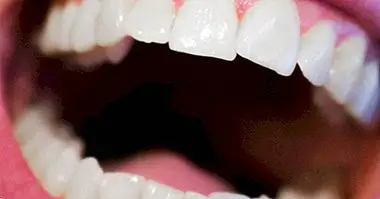Masochistic personality disorder: symptoms, causes and treatment
Self-denial and self-sacrifice in order to help others are aspects that are valued positively by society when they start from a willingness to help someone at a specific moment. However, there are people who always put their needs before their own and even deny theirs or the possibility of experience pleasure or joy for themselves and for themselves .
We are not talking about someone generous who does us a favor, but someone who literally is dedicated to meet the needs of others even without them asking or deem it necessary. People who deny all kinds of recognition, but who at the same time feel deeply offended if their effort is ignored. People with a constantly dysphoric emotionality, with thoughts of not deserving anything positive and a great insecurity and fear.
We are talking about people with a dysfunctional personality, which does not allow them to adapt correctly to the environment and generates great suffering. We are talking about what they live people with a masochistic or self-destructive personality disorder .
- Related article: "Sadistic personality disorder: symptoms and characteristics"
The masochistic or self-destructive personality disorder
Self-destructive or masochistic personality disorder is considered to be that type of personality characterized by the presence of a pattern of behavior and vision of the world relatively stable in time and through situations in which they appear constantly self-destructive and self-denying elements .
People with this type of personality are characterized by presenting an autodevaluative behavior and seeker of pain and suffering , visible in the search for environments that tend to lead to the presence of frustration or even to the search for abuse or abuse (it is not uncommon for people who are attracted to them and feel attraction for sadistic personalities to be considered boring) , the denial of their own needs and avoidance of seeking pleasure and fun. There tends to be a rejection towards those people who treat him well, and deny the possibility of being helped.
It is probable that after positive experiences they actively seek to live aversive experiences or that they become depressed. These are people who manifest an excessively selfless and generous behavior towards others, often self-sacrificing despite not being necessary or required. In addition to that, tends to fail in the fulfillment of its own objectives . They usually accumulate situations of frustration and self-prejudice.
People with this type of personality usually see others either as beings in need of help or as competitive and cruel beings, while they see themselves as despicable, deserving of pain or simply useless. They tend to look for routine and consider that their achievements are due rather to luck or external intervention.
It is about people with a high vulnerability to humiliation, a great insecurity and fear of abandonment . They do not usually ask for favors or make great efforts to achieve their own goals, having a rather passive attitude and seeking gratification in self-denial and in benefiting others. They tend to remain in the background and allow abuse to them, having a distressed profile and giving the appearance of simplicity. Frequently they present cognitive distortions, consider themselves inferior and believe that they have a duty to help others and never prioritize. Likewise, the fact of helping others makes them see themselves as necessary.
It is necessary to bear in mind that this disorder does not derive solely from the experience or fear of living some type of abuse, nor does it occur exclusively during the presence of an episode of major depression.
- Maybe you're interested: "Low self-esteem? When you become your worst enemy"
Impact on the vital level
Obviously, the previous characteristics generate that these people present a series of important difficulties in their day to day, which can take place with a high level of suffering. It is not uncommon for them to experience high levels of frustration , something that in turn feeds their beliefs of being unworthy.
In their relationships they have a tendency to be abused and mistreated, and behaviors of absolute submission often appear. This is also reflected in other relationships: many people can take advantage of them , while many others will tend to get away from them due to their excessive generosity and submission. Those people who treat them well or tend to want to help them may find themselves with rejection by these people.
And not only in the social, but also in the labor can problems be found: they are likely to carry out long days of work with the purpose of benefiting others. Also, this can decrease your own productivity. Their lack of confidence can limit their chances of improvement in all areas, as well as behavioral passivity in terms of seeking their own well-being.
Possible causes
The reason for the causes of this type of personality is unknown, having in fact a multi-causal origin. Although the causes are not entirely clear, some of the hypotheses in this regard show the influence of childhood experiences and learning made throughout life.
The main hypotheses in this regard are mainly from a psychoanalytic perspective. Among the different factors that seem to influence the appearance of this personality disorder is the confusion and integration in the same subject of the experience of punishments, pain and suffering together with the feeling of protection and security. It is also possible that it was learned that the only way to achieve affection is in moments of personal suffering (something that in the future will make self-devalue as a mechanism to achieve this affection).
The presence of loss-making parental models (parents absent and cold, irritated and with a high level of vital frustration) that the child will later replicate as a way to function and see the world is also proposed as a hypothesis. Another of the elements discussed is the lack of capacity to integrate positive elements, feeling safe feeling despised and miserable.
Treatment of this personality disorder The treatment of a personality disorder (either this or another) is somewhat complex. After all, we are faced with a way of proceeding and seeing the world that has been configured throughout the life of a person. Despite this, it is not impossible.
In the case that concerns us and from Millon's model, the treatment would seek to reverse the pleasure-pain polarity (a person with this personality disorder tends to have some discordance obtaining pain pleasure and vice versa) and strengthen the search for perks In themselves (decreasing dependence on others). It would also seek to generate a change in beliefs towards oneself and modify the negative and devaluative beliefs towards oneself and the need to consent to constant and excessive abuses and self-sacrifices. They would seek to modify the belief that they deserve to suffer or that their life has no value in itself and only has value if they help others, as well as the rest of the cognitive distortions that they usually present.
It would also try that they will stop seeing others as needing help or hostile entities and generate behavior modifications in such a way that they stop looking for dependency relationships. Also alter the way you relate to others and the world, as well as encourage a more active and less querulous vital positioning. Improving self-esteem and decreasing the level of vital inhibition are also elements that can help people to adopt a more adaptive way of seeing the world.
For this, the use of techniques such as cognitive restructuring, behavioral experiments, the use of expressive techniques or psychodrama would be useful. Social skills training It can also be useful in order to learn to relate positively. The use of animal-assisted therapy could also be useful, as well as training in assertiveness. Likewise, behavioral activation may be very necessary to help them acquire a more active position vitally
- Maybe you're interested: "Types of psychological therapies"
Current status of the diagnostic label
As with sadistic personality disorder, masochistic personality disorder was contemplated in the revision of the third edition of the Diagnostic and Statistical Manual of Mental Disorders or DSM-III-R.
However, both diagnostic labels were removed in later editions, becoming part of the classification of personality disorder not specified. Talking about Millon, whose biopsychosocial model is one of the most recognized in terms of personality disorders , this continues to maintain it as a personality disorder in the MCMI-III.
Bibliographic references:
- American Psychiatric Association (1987). Diagnostic and statistical manual of mental disorders. 3rd revised edition (DSM-III-R). Washington, D.C.
- Horse, V. (2001). An introduction to personality disorders in the 21st century. Behavioral psychology, 9 (3); 455-469.
- Horse, V.E. (2015). Manual of personality disorders. Description, evaluation and treatment. Editorial Synthesis.
- Millon, T., Davis, R., Millon, C., Escovar, L., & Meagher, S. (2001). Personality disorders in the modern life. Barcelona: Masson.
- Millon, T., Grossman, S., Davis, R. and PhD, and Millon, C. (2012). MCMI-III, MILLON Multiaxial Clinical Inventory. Ed: Pearson, New York.



















